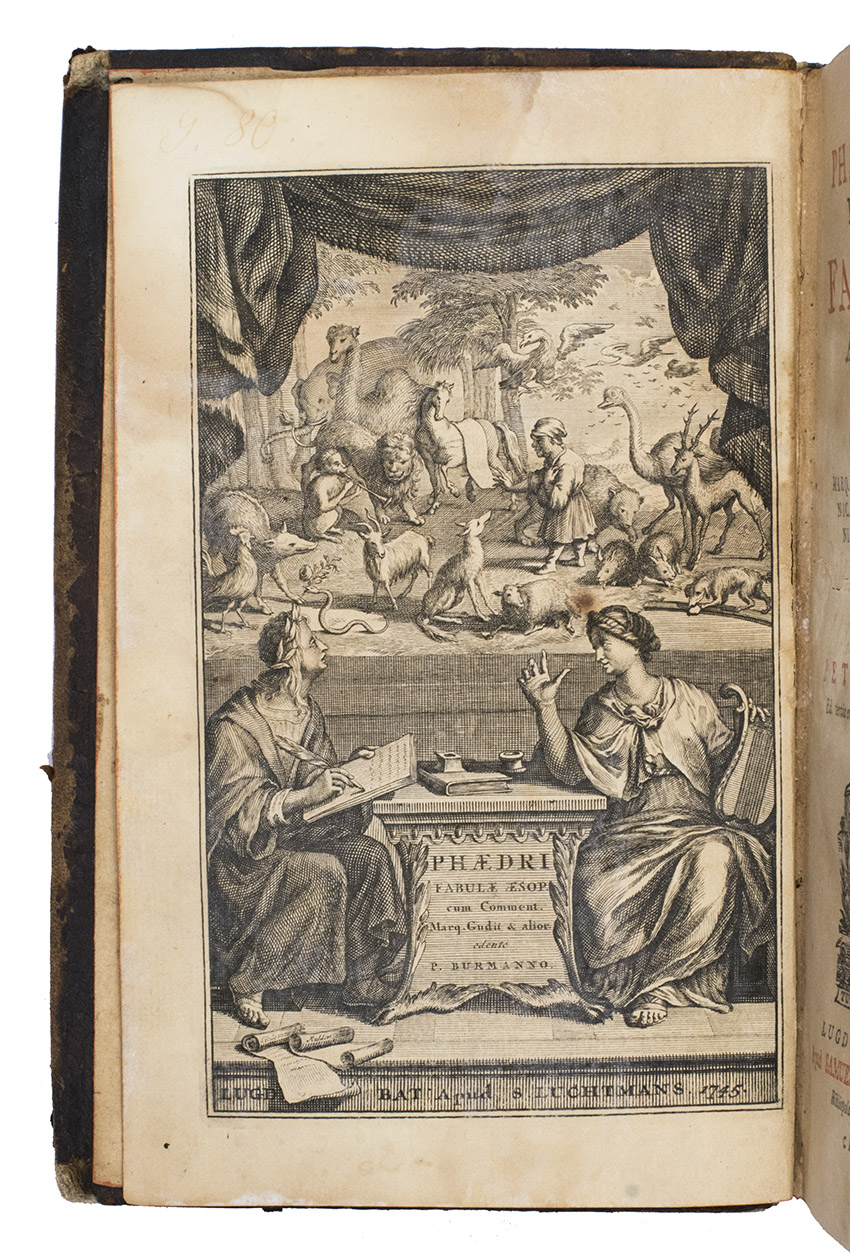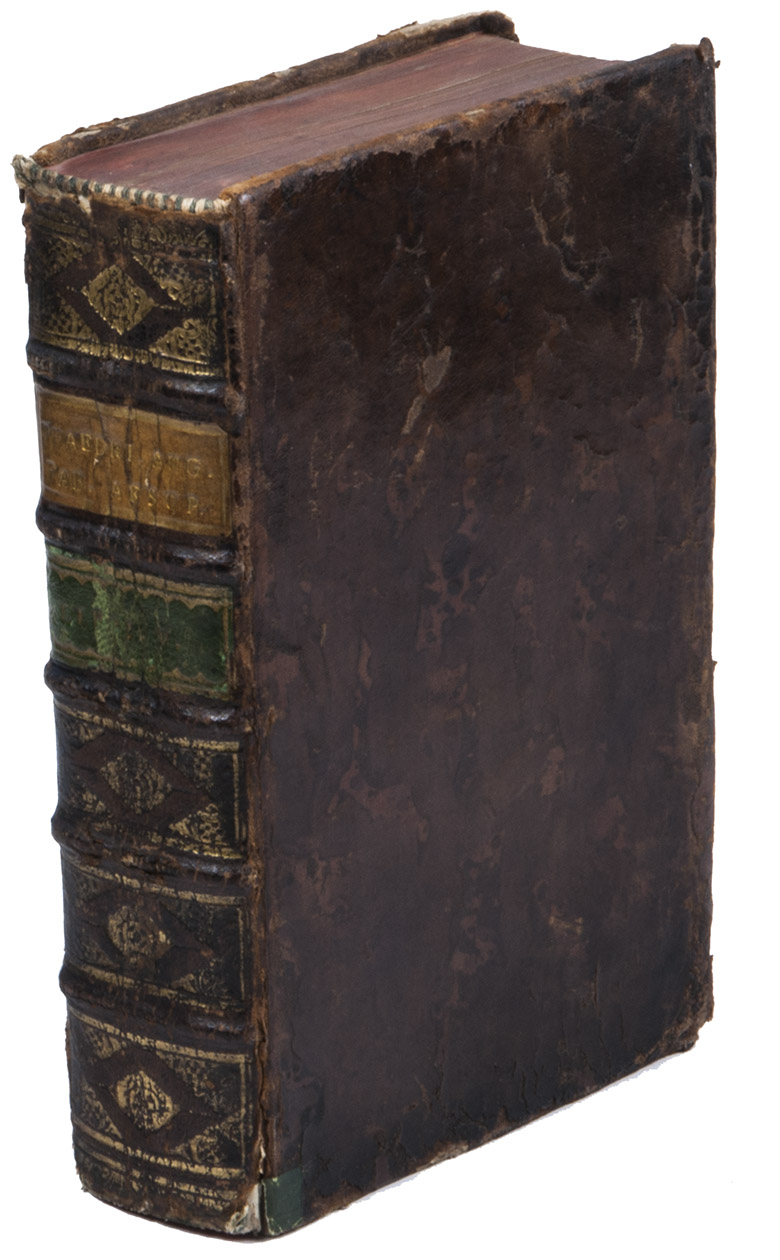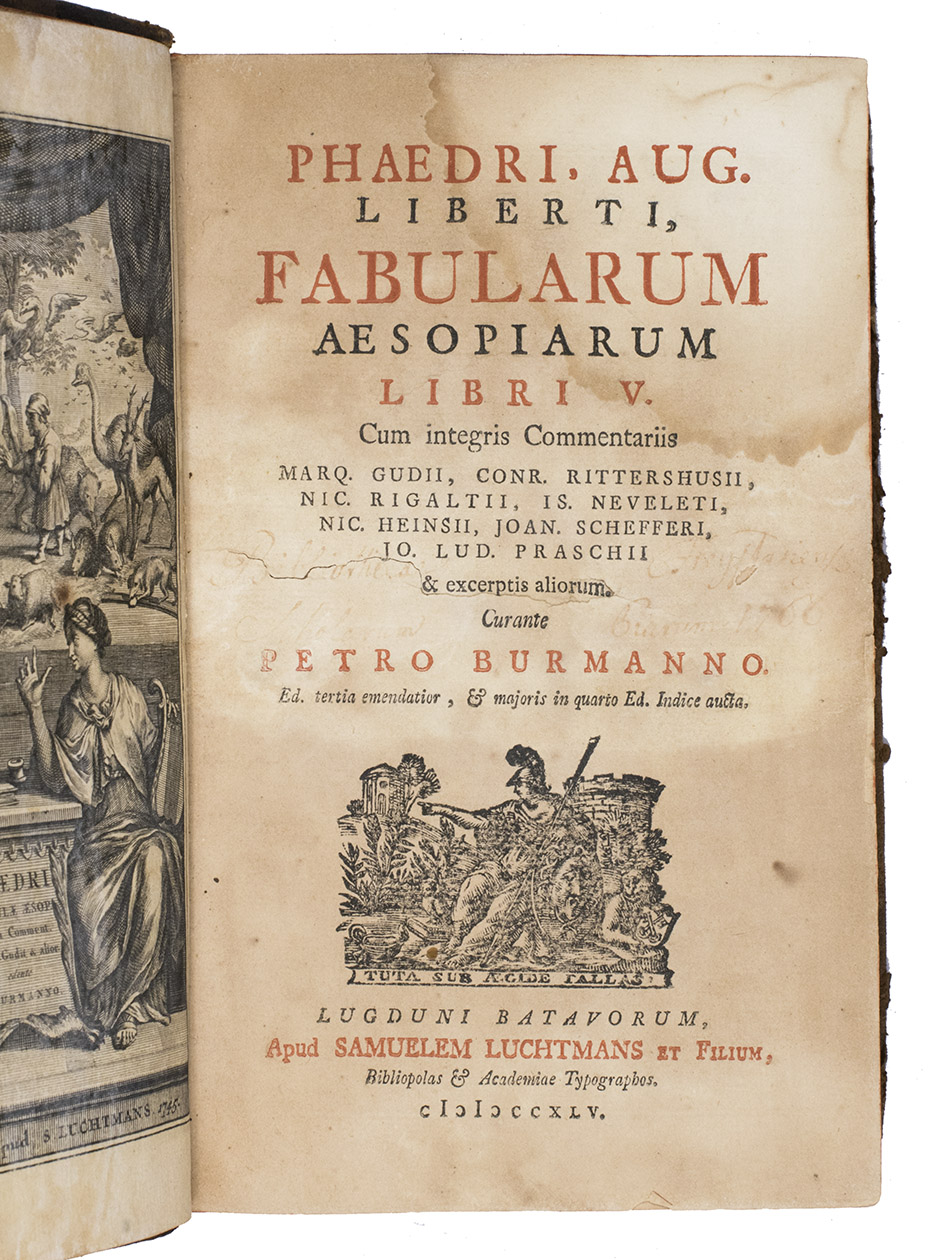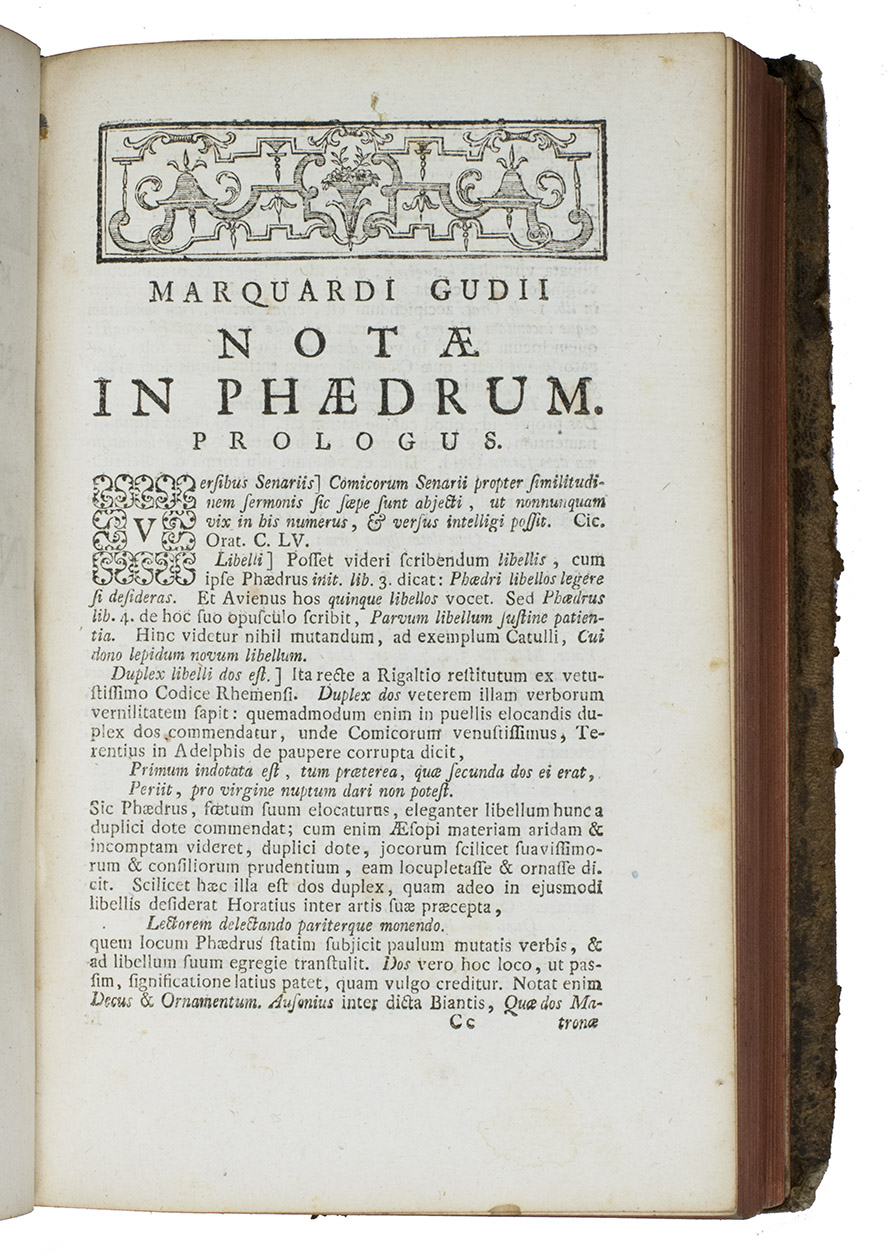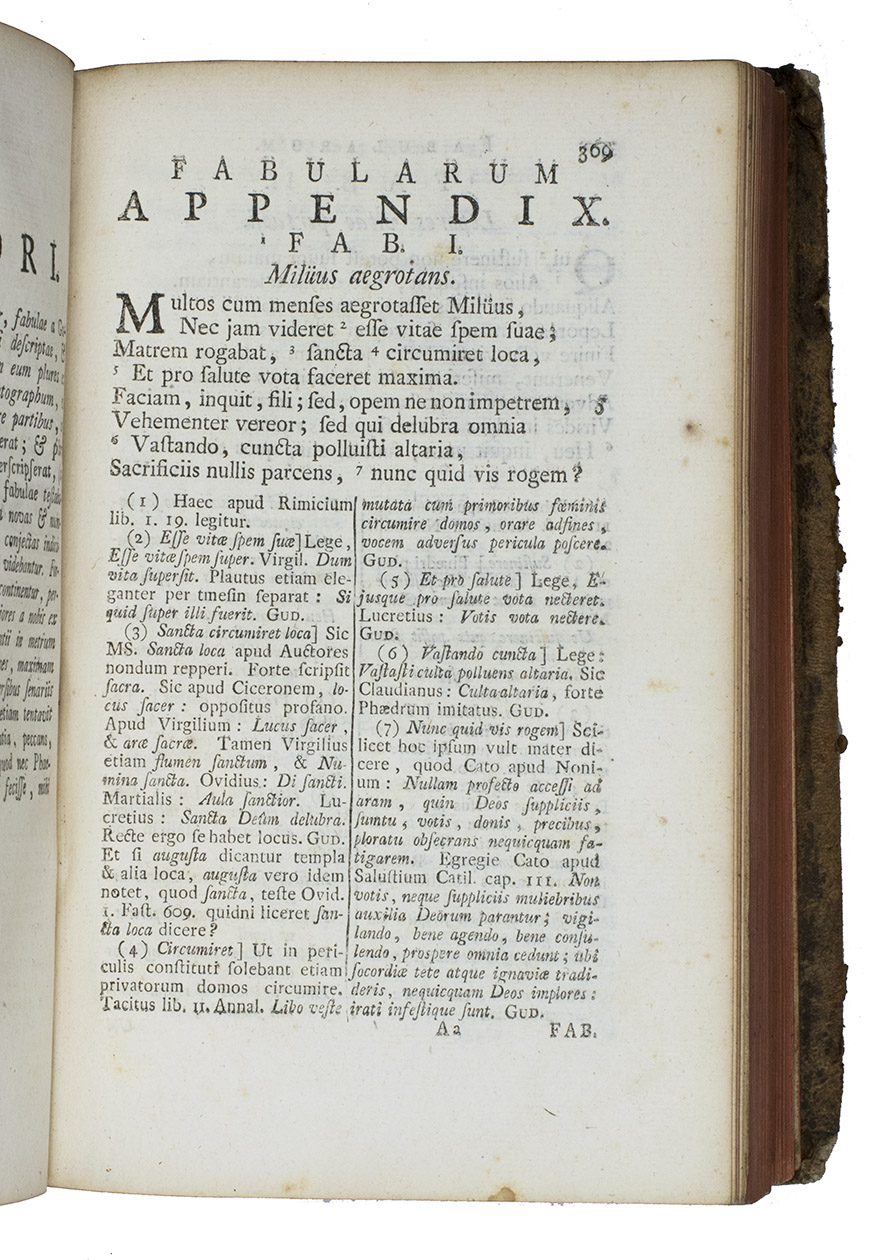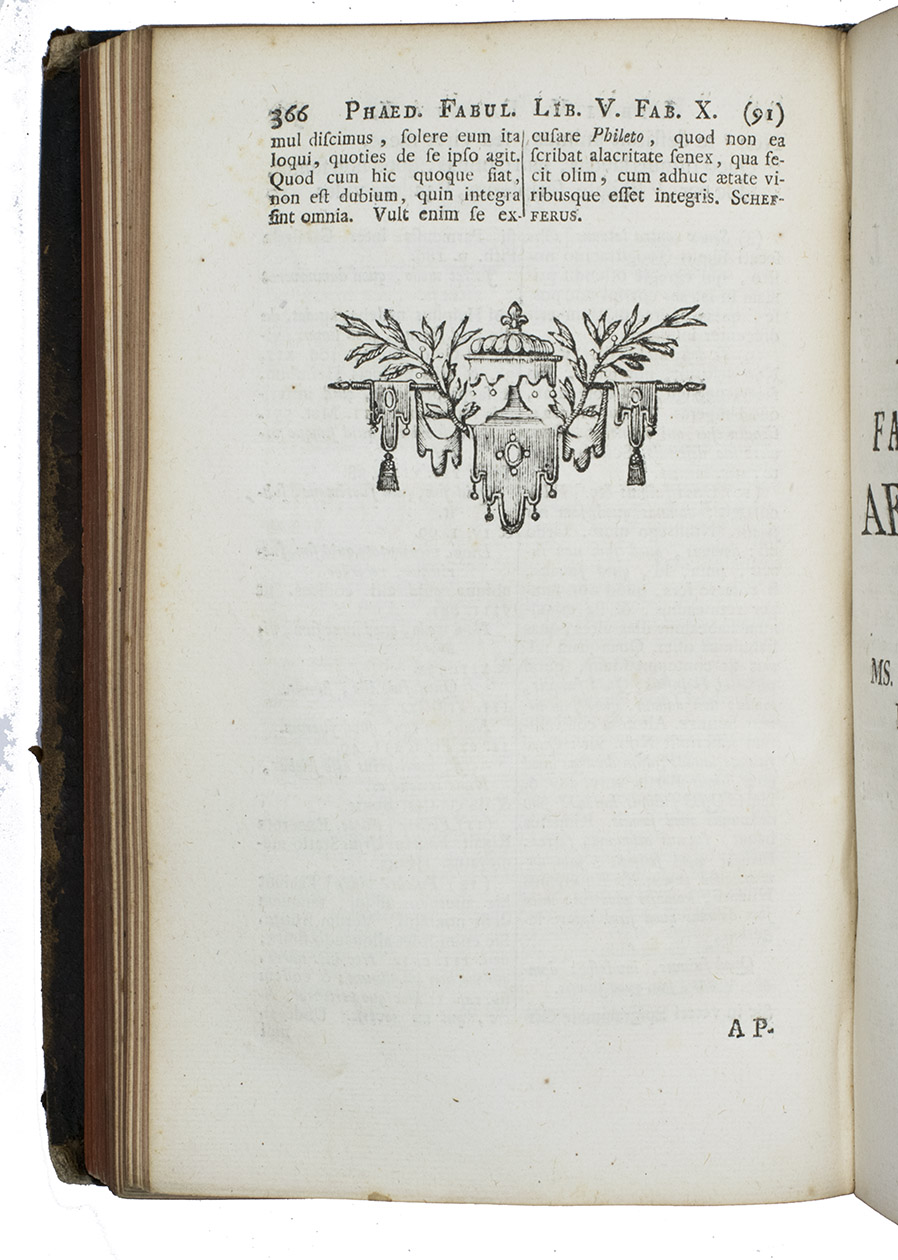PHAEDRUS.
Phaedri, Aug. Liberti, Fabularum Aesopiarum Libri V. Cum integris commentaribus Marq. Gudii, Conr. Ritterhusii, Nic. Rigaltii, Is. Neveleti, Nic. Heinsii, Joan. Schefferi, Jo. Lud. Praschii & excerptis aliorum. Curante Petro Burmanno. Ed. tertia emendatior, & majoris in quarto Ed. Indice aucta.
Leiden, Samuel Luchtmans & and son, 1745. 8vo. With the well-known engraved frontispiece after the original by Joseph Mulder and Tiedeman; Title-page printed in red and black, with woodcut printers device; some woodcut headpieces and initials. Mottled calf over boards, ribbed spine gilt in compartments with red and green title labels lettered in gold, edges painted red. [64], 398, 258, [72] pp.
€ 275
Third edition of the Burman recension of the 94 Fables of Phaedrus in Latin verses with Burmans commentary in two columns underneath The first edition appeared in Amsterdam, Wetstein, 1698 (see nr. 15), the second in 1727, Leiden by Luchtmans (see nr. 30). Our present third edition is for the most part a page-for-page reprint of the 1727 edition, printed by the same publisher.
After his studies of Law and the classical languages in Utrecht, his native city, and Leiden, Petrus Burman the Elder (1668-1741) settled down to the practice of law, without, however, abandoning his classical studies. In 1696 he was nominated to the professorship of eloquence and history at the Utrecht University. To this chair was soon added that of Greek and politics. In 1714 he paid a short visit to Paris and ransacked the libraries. In the following year he was appointed successor to the celebrated Perizonius, who had held the chair of history, Greek language and eloquence at Leiden. In 1724 he became the 9th Librarian of Leiden University. His numerous editorial and critical works spread his fame as a scholar throughout Europe, his Phaedrus edition being the first. Burman was rather a compiler than a critic; his commentaries show immense learning and accuracy.
Tear in title-page, browning and (water)staining at the beginning. Spine slightly damaged, corners bumped, binding edges rubbed. Cf. Bodemann, 90.1-3 (1st, 2nd and 4th ed.); Fabula docet, 189-190, nr. 188; Landwehr, F152; Schwabe/Barbier, 93-94.
Related Subjects:
